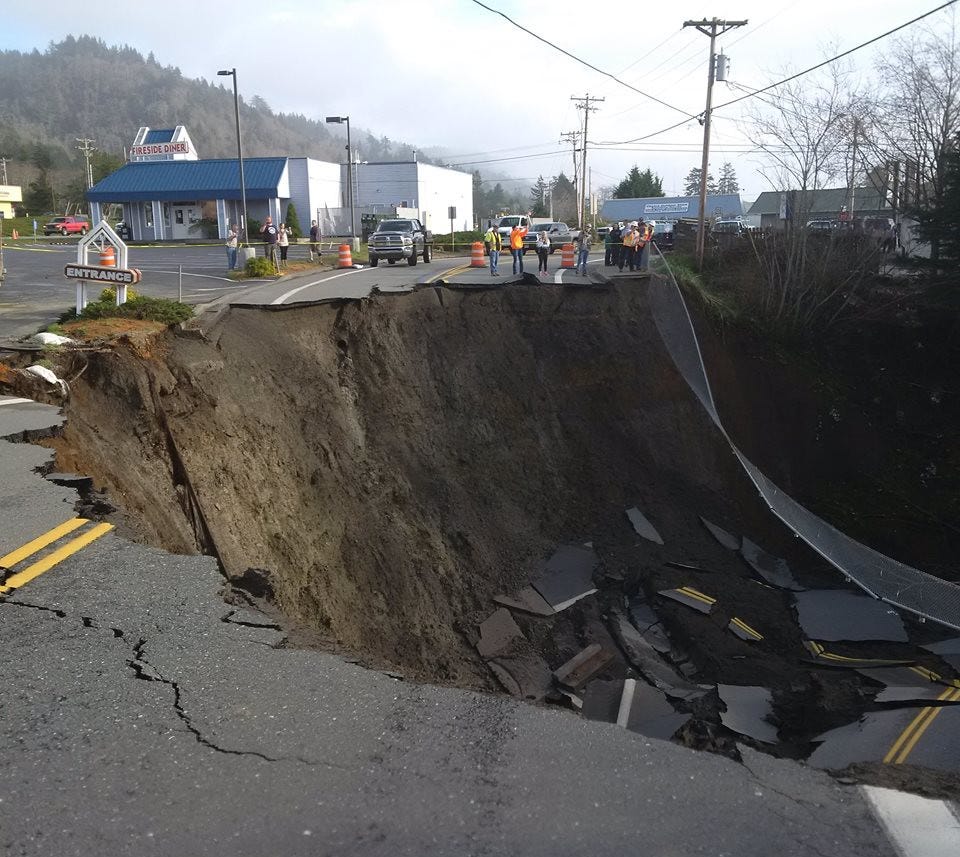
Implementing Agile - Beware the Sinkholes
Do you know what a sinkhole is? I mean...really know. As in, understanding what causes them and the warning signs that one is about to make a grand appearance.
Basically, sinkholes appear when the underlying structure, usually the ground, fails and collapses. Most commonly, the failure is caused by water flowing where it wasn't expected. The flow of water, from a broken water pipe or misdirected drainage system, washes away the supporting soil until it can no longer support what's sitting on top of the erosion activity. Slowly, then all of the sudden, what was on top is now at the bottom of a hole. If someone is paying attention (or is paid to be attentive) there may be warning signs - a sagging roadway, a tilting structure, or a partial collapse, for example.
So that's what a sinkhole is in physical space. In the world of human endeavor, it can be helpful to use the idea of sinkholes as a mental model. Alternatively, they can be thought of as one of the failure modes for Agile implementations. It's bad when they happen, so you want to be asking yourself several questions.
How healthy is the underlying support for whatever it is you're working to accomplish?
Are you watching for the signs that the support may not be in the best of health?
Do you even know what signs to look for?
What are the hidden signs of the erosion that most certainly is in play?
Whether someone sees sinkholes developing or they happen unexpectedly, the safe assumption is that they are developing somewhere. It's the Second Law of Thermodynamics in action. Everything moves toward disorder and randomness. As process optimizers and organizers, it's our job to actively search for them. And when Agile implementations fail, the savvy Agilist busies herself with relentlessly pursuing the root causes and learning from them. No cause is off limits from inspection, even if she herself contributed to the erosion.
What warning signs were missed?
What were the subtle but powerful forces in the system that fed the erosion?
What weaknesses were "built in" with the initial implementation efforts?
A few common elements that create conditions for implementation sinkholes include:
A vibrant grapevine and culture of back-channeling. Covert and subversive by nature, these networks are actively maintained by corporate barnacles, petty tyrants, and pico-empire builders within the larger organization. They are the tools of the trade for people bent on protecting their rice bowl or patch of turf.
Resistance to moving past Agile 101. Learning Agile is simple. It's the practice that is hard. The friction caused by individuals or teams that insist on being sent to training for the basics again and again or who repeat mistakes in practicing the basics can easily stall an Agile implementation. This type of solidification can deflect the flow of progress such that erosion occurs somewhere else in the system. For example, if one team lags in their progress (as a result of wasted time spent on repeat training) causing another team to wait for needed output, the whole system can slow down. The knock-on effects can be considerable and long-lasting. An individual, team, or organization that is working to apply the basics and making unique mistakes along the way from which they learn how to improve has a much greater chance for success.
Ignoring the signs or occurrences of small sinkholes. Assume sinkholes exist, you just don't know where they are. They are not always, maybe not even usually caused by malevolence. But humans are not machines. We are easily distracted and our behavior can be unpredictable. Unlike physical sinkholes, in dynamic systems involving humans behavioral sinkholes are highly contagious. "What's the harm in a little erosion?", you might ask. A little here become a little there and pretty soon there's an unmanageable amount of erosion everywhere. The bottom falls out and everyone looks surprised.
Remember: Sinkholes usually form gradually and appear suddenly. Don't be the Agile coach or Scrum master caught with a surprised look on your face.
Image credit: Oregon Department of Transportation










